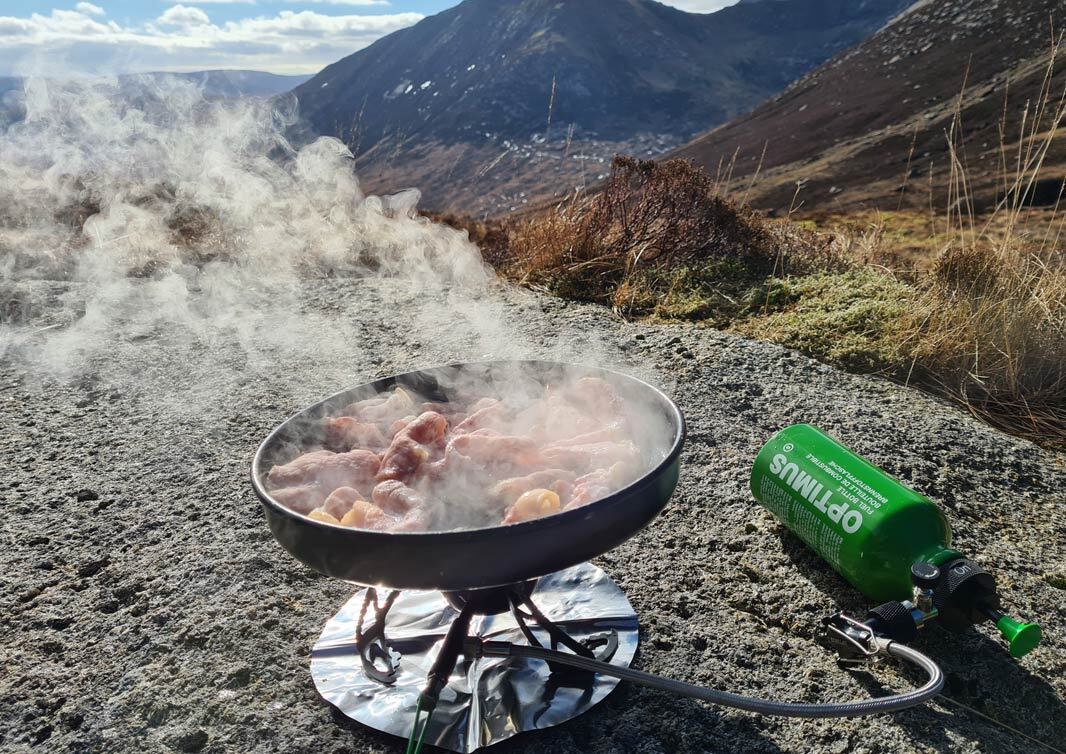Wild Camping for Beginners: A Comprehensive Guide for the UK
Posted by Andy Neil on Sep 05, 2024
Pictured: MSR Front Range Tent and Thermarest XTherm Mat
Wild camping is more than just a hobby; it’s an enriching and deeply rewarding experience that allows you to reconnect with nature in its most unfiltered form. Whether waking up to a breathtaking mountain sunrise, listening to the soothing sounds of a forest at night, or simply enjoying the solitude that only the wilderness can offer wild camping provides a unique escape from the everyday hustle and bustle. The thrill of setting up camp in a remote, unspoiled location brings a profound sense of freedom and adventure, reminding us of our primal connection to the land.
However, with this privilege comes responsibility. The wild places we explore are delicate ecosystems that require our utmost respect and care. As wild campers, we must minimise our impact, ensure that our presence is as unobtrusive as possible, and leave no trace of our visit. This respect for nature preserves these environments for future adventurers and helps maintain the goodwill that allows wild camping to remain an accessible activity.
Education plays a crucial role in fostering responsible camping practices. New campers, in particular, should be aware of the importance of respecting the wild, understanding the rules of the land, and learning how to camp sustainably. By educating ourselves and others, we contribute to preserving these beautiful landscapes and ensuring that wild camping remains a sustainable and enjoyable pursuit for generations to come.
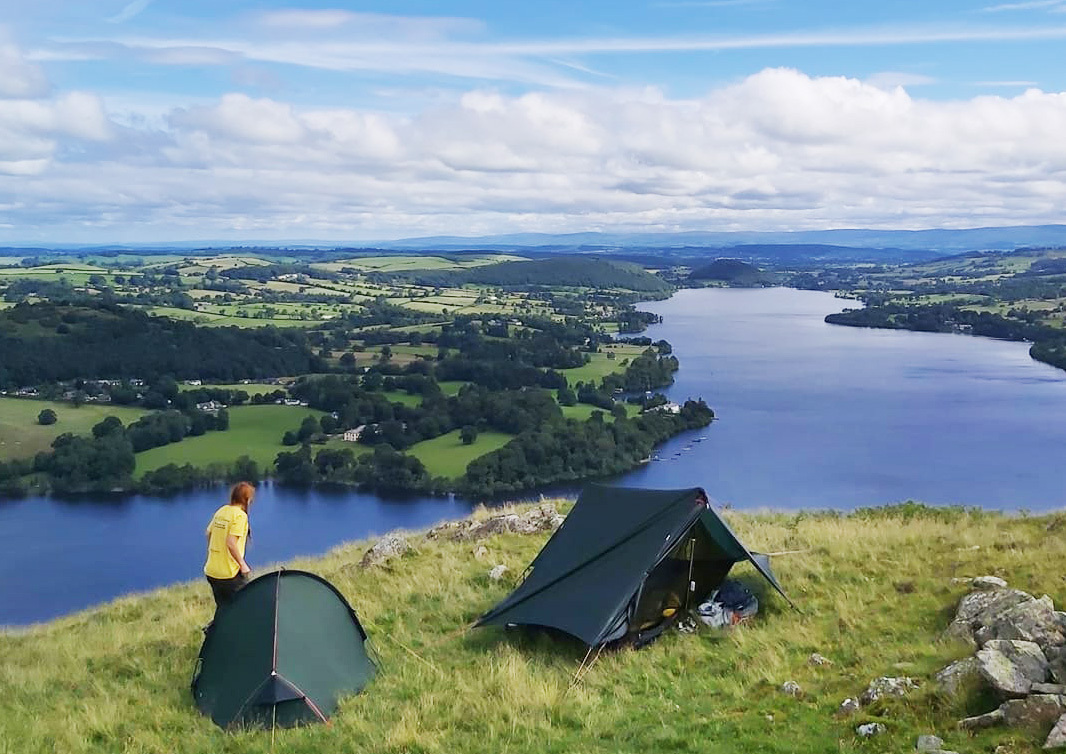
The Legality of Wild Camping Here in the UK
Wild camping in the UK is subject to various regulations, and the rules can vary depending on the country (England, Scotland, Wales, and Northern Ireland) and specific locations, such as National Parks. Here’s a summary of the rules and references from relevant bodies:
Wild Camping in England and Wales
Legal Status: Wild camping is not generally legal in England and Wales without the landowner's permission. Exceptions include Dartmoor National Park, where limited wild camping is allowed.
However, wild camping is (often) tolerated if you follow guidelines like camping above the highest fell wall, away from towns and lakes, staying only one night and Leave No Trace. It’s crucial to respect the environment and be prepared to move on if asked by landowners or their representatives (taken from lakedistrict.gov.uk, which you can read here).
Dartmoor National Park: “Dartmoor is the only place in England where wild camping is legal without a landowner's permission, but only in certain areas and following specific guidelines.” The National Park Authority provides a map showing where wild camping is permitted and advises campers to “stay no more than two nights, camp at least 100 meters from roads and buildings, and Leave No Trace.”
Scotland
Legal Status: Wild camping is legal in Scotland thanks to the Land Reform (Scotland) Act 2003, which allows for responsible access to most land.
Scottish Outdoor Access Code: The code states: “Wild camping is a great way to experience Scotland’s landscapes, but it’s important to do so responsibly. Camp in small groups, away from roads and buildings, and Leave No Trace.”
Northern Ireland
Legal Status: Wild camping is prohibited in Northern Ireland without the landowner's permission.
Leave No Trace Ireland: The organisation promotes responsible outdoor behaviour and states, “If you wish to wild camp in Northern Ireland, you must seek the landowner's permission. Always follow the principles of Leave No Trace.”
General Advice from National Parks UK
“While wild camping is part of the experience of visiting National Parks, it should be done responsibly. Always check local regulations, camp out of sight, and follow the Leave No Trace principles.”
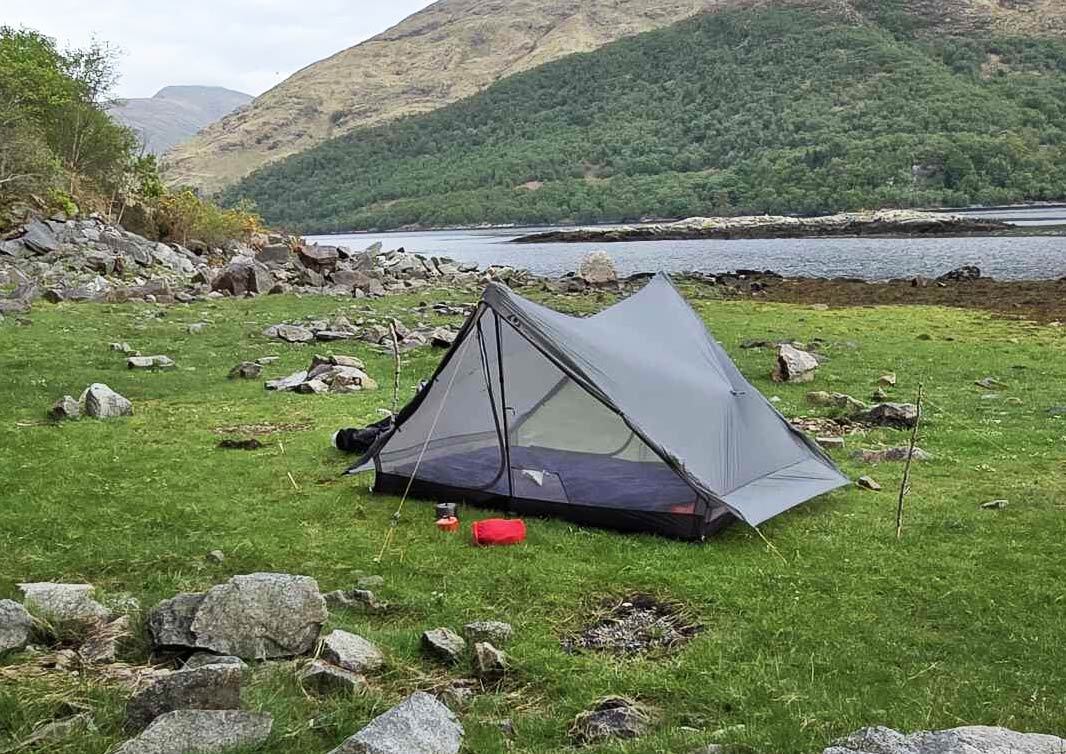
Camping on TGO Challenge (Coast to Coast of Scotland, 2024)
In Summary, while wild camping is restricted in England, Wales, and Northern Ireland, it is more permissible in Scotland, where the right to roam allows for greater freedom to camp. In the rest of the UK, wild camping is generally “tolerated” as long as campers act with care and respect for the environment and Leave No Trace.
It's important to remember that wild camping is considered a civil matter rather than a criminal one. If a landowner asks you to move on, do so respectfully and without confrontation. In my experience, having wild camped in England for over a decade, I have never been asked to move on. By acting responsibly, you help preserve the goodwill that allows wild camping to remain an option in these areas.
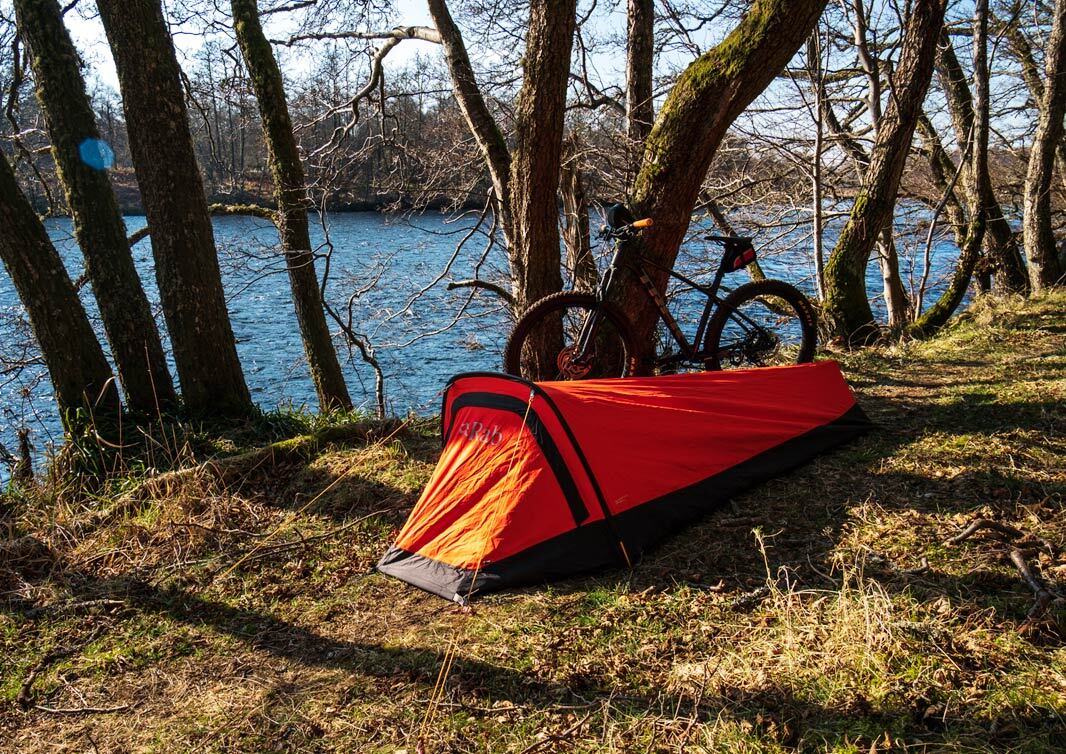
Pictured: Rab Ridge Raider Bivi
The Two Types of Wild Campers
Wild campers generally fall into two main categories, each with distinct motivations and approaches:
The One-Night Nature Enthusiast
This group wild camps for the sheer love of it. They seek the experience of waking up surrounded by mountains, forests, or other beautiful landscapes. Often, they’re willing to carry more gear and may prepare more elaborate meals, as the focus is on the enjoyment of the camping experience itself rather than just the necessity of it. This will generally be most people's introduction to the hobby, and some will move on too...
The Multi-Day Adventurer
These campers often hike long-distance trails such as the Coast To Coast or the Cape Wrath Trail or engage in multi-day journeys. Wild camping is a necessity for them, offering flexibility in route planning and helping to avoid the costs of campsites and B&Bs, especially when on a budget. The primary goal is practicality—finding a suitable spot to rest for the night, conserving energy, and carrying just the essentials. The Multi-Day Adventurer prioritises the fast and light approach, carrying minimal gear, enabling them to cover considerable distances over multiple days. If you have never been wild camping and are planning an upcoming multi-day trip, have a night away to familiarise yourself with your gear before hitting the trail.
Essential Kit List for Wild Camping
Having the right gear is critical to a successful wild camping trip. Here’s a detailed list to help you prepare:
Shelter and Sleep System
Tent or Bivvy Bag: When choosing shelter, a lightweight tent is ideal for most outdoor adventures, offering protection tailored to your camping style. A robust Tent is necessary for mountain tops, while a lighter tent is better for covering long distances. Alternatively, a Bivvy Bag is more compact and lightweight, perfect for minimalist camping.
Sleeping Bag: Choose a sleeping bag with a temperature rating suitable for the season; a Three-season bag offers versatility. Down insulation is lighter and more compact but less effective when wet, while Synthetic Insulation remains warm even when damp but will be heavier and bulkier to carry.
Sleeping Mat: When selecting a sleeping mat, decide between an inflatable and a foam mat. Inflatable Mats provide better comfort but may be prone to punctures, while Foam Mats are more durable. Mats offer comfort but also insulate you from the ground. A mat's R-value determines how well it insulates; the higher the value, the warmer you will be.

Pictured: MSR Tindheim 2P Tent
Cooking and Hydration
Lightweight Stoves: When selecting a stove, screw-on Gas Canister Stoves are preferred for their ease of use and efficiency, while alcohol stoves are lightweight but require careful fuel management. Using a Windshield can enhance efficiency by shielding the flame from wind.
Camp Kitchen: Lightweight Titanium or Aluminium pots are ideal for cookware. A pot with a lid and handle makes it easy to cook and handle. Pair it with a Spork or Multi-tool Utensil to minimise gear and reduce weight.
Water Filter or Purification Tablets: If you are only camping for one night, it is easy to carry the water you need for the night, enough for a cup of tea, a dehydrated meal, and some left for breakfast. However, if you are planning a longer journey, it's essential to purify your water safely. A Filter can quickly make natural water sources safe to drink. Look for filters with a high flow rate and ease of use. Water Purification Tablets are compact and practical, but may require time to work. Always take water from fast-flowing streams. If unsure, it is always recommended to boil water.

Pictured: Gregory Focal 48 Rucksack
Clothing
Waterproof Jacket and Trousers: Choose a jacket with breathable fabric, adjustable hoods, and ventilation zips. Opt for lightweight, packable, waterproof trousers for easy carry.
Insulating Layers: Use Fleece or Down Jackets for warmth. Select lightweight, compressible options that pack easily—layer with a moisture-wicking base layer for comfort and a waterproof layer for protection.
Base Layers: Opt for Synthetic or Merino Wool base layers to wick moisture away and provide warmth. Ensure they fit snugly but comfortably for adequate insulation.
Hat and Gloves: A Warm Hat, like a beanie or one with ear flaps, helps retain body heat. Insulated, Waterproof Gloves keep your hands warm and dry in cold, wet conditions.
Nightwear: It’s good practice always to have a dry set of clothes to sleep in. Keep these separate from your other gear. I always leave mine at the bottom of my sleeping bag. That way, if you get soaked throughout the day, you have something dry to put on to sleep in.
Miscellaneous
Backpack: A 40-60 litre pack is ideal. Look for additional features such as a hydration sleeve, multiple compartments, and a rain cover.
Trowel and Biodegradable Toilet Paper: Bring a lightweight Trowel for digging cat holes, and only use Biodegradable Toilet Paper.
Plastic Bags: Use sturdy, sealable bags to pack out all rubbish, including food scraps and waste, ensuring nothing is left behind.
Map and Compass: Carry a detailed topographic Map of your area, ideally waterproof or in a Map Case. Pair it with a reliable Compass and learn how to use both for navigation.
Head torch: To preserve night vision, opt for a head torch with adjustable brightness and a red light mode. Bring extra batteries or a rechargeable head torch for longer trips.
First Aid Kit: Pack a kit with bandages, antiseptic wipes, blister treatment, pain relief, and any personal medications, customising it to your needs.
Mobile Phone and Power Bank: Use your phone for navigation and emergencies, ensuring it's fully charged. A high-capacity power bank allows you to recharge your phone and other devices.
Pictured: Black Diamond Beta Light 45 Backpack
Your First Wild Camp
Embarking on your first wild camping adventure is an exhilarating experience, but it doesn't need to be a grand expedition into the wilderness. A successful first wild camp often means keeping things simple and local. Here’s why your debut shouldn’t involve scaling a mountain or trekking miles away from home, and how to ensure a positive and rewarding experience.
Pictured: Copper Spur HV UL1
Why Keep It Local?
1. Familiarity Breeds Comfort: Starting your wild camping journey in a familiar area can make the experience more enjoyable and less daunting. Choose a location you know well—perhaps a nearby forest, a secluded spot near a body of water or a local hill. Knowing the terrain, nearby landmarks, and general layout can reduce anxiety and help you feel more at ease. When not contending with unfamiliar surroundings, you can focus on enjoying the experience and learning the ropes of camping.
2. Proximity to Your Car: Selecting a spot to camp relatively close to your car has several advantages. It lets you quickly transport your gear and supplies to and from camp. This proximity also provides a safety net; if you encounter issues or feel uncomfortable, you can pack up and head home with minimal hassle. It’s a great way to ensure you can troubleshoot any problems with your equipment or camping skills without being far from help.
3. Testing Your Gear: Your first wild camp is the perfect opportunity to learn your gear. By camping close to home, you can experiment with your tent, sleeping bag, stove, and other equipment without the pressure of being far from civilisation. You can check for any issues, practice setting up and breaking down your camp, and familiarise yourself with everything.
4. Low Stakes: Any issues or discomforts are less likely to become major issues when you're not far from home. If you realise that your gear isn’t quite right or if you need to make adjustments, you can quickly return home to address these issues. This lowers the stakes and allows you to enjoy the experience rather than worry about potential issues.
Planning Your First Camp
1. Check the weather: Rain can undoubtedly put a dampener on things, but if you have the kit to deal with it, the rain, especially during the night, is not that much of an issue. However, it can make for a soggy walk back to the car in the morning. However, the wind often catches people out. Tents can be noisy in solid winds and damage tents in extreme cases, even in a 4-season tent, so always pack earplugs and check the weather forecast. The Met Office is an excellent place to start, and as you venture further afield, make sure to check the Mountain Weather Information Service.
2. Pack Wisely: Check and Recheck your bag. Make a checklist to make sure you have everything. Forgetting something small, like tent pegs (we have all done it), can ruin your evening camp. Make sure your head torch and powerbank are topped up. Download the area map and a good podcast or audiobook to your phone.
3. Choose the Right Spot: Local nature reserves, woodlands, and nearby hills are excellent options, as they often balance seclusion and safety. When scouting for a spot, prioritise areas that offer natural shelter, such as a stand of trees or a low-lying area, to protect you from the wind and harsh weather conditions. Trees can provide significant protection from the wind, creating a more comfortable campsite. However, it's crucial to carefully inspect the trees around your chosen spot for any dead or overhanging branches, commonly referred to as “widowmakers.” These can pose a severe hazard if they fall, especially during strong winds or storms. Aim to find a flat, dry area that will be comfortable for sleeping. Avoid pitching your tent in valleys or dips where water might collect in case of rain.
4. Set Up Your Camp: Though the rule is “Pitch Late, Leave Early,” arrive at your site with plenty of daylight to become accustomed to where you will be camping. Practice pitching your tent and organizing your gear. Ensure you have a comfortable and level spot to sleep and that all your equipment is functioning correctly. Take the time to get comfortable with your setup and make any adjustments as needed.
5. Enjoy the Experience: Once your camp is set up, take some time to relax and enjoy the outdoors. Cook a meal, read/listen to a book, watch the sunset, hunt for some mushrooms, or enjoy the silence.
Flat ground and amazing views. Pictured: Hilleberg Anaris
6. Post Camp: When you head back to civilisation, remember the old mantra, “Look after your gear, and your gear look after you” Make sure to dry your tent out; even if it didn't get a soaking, hang it over a washing line or shower curtain to let it dry out. Clean your cookware, back flush your filter, etc. Reflect on your experience: What worked, what didn't, and what didn't you use? Did you have the proper clothing? Were you warm enough throughout the night? Each tip is a learning experience.
By starting your wild camping journey with a local, low-stakes experience, you’ll build the confidence and skills needed for more ambitious outings. Remember, the goal of your first wild camp is to enjoy the outdoors and become familiar with your gear, setting the stage for many more adventures.
Leave No Trace Principles
The Leave No Trace principle is more than just a guideline for outdoor enthusiasts; it's a philosophy that underscores the relationship between humans and nature, particularly when wild camping. This principle is an unspoken contract binding you to the landscape and fellow campers who share the same natural spaces. It's important to remember that unless you are in Scotland, you have no right to be there (legally). We want to show the landowners and the general public that wild campers respect the land.
National Trust urges people to ‘leave no trace’ (External Link)
National Trust Wild camping in the Lake District (External Link)
A Contract with the Landscape
When you set out for a wild camping adventure, you're stepping into an environment that has existed long before your arrival and will continue to exist long after you've left. The landscape, in all its natural beauty, offers you its resources—fresh air, scenic views, and a sense of tranquillity. In return, the Leave No Trace principle asks that you minimise your impact on this environment. This means everything from setting up camp in a way that doesn't disturb the local flora and fauna to packing out all waste and leaving the site as you found it. It’s about respecting the land as a living entity and acknowledging that every action, no matter how small, has a ripple effect on the ecosystem.
A Contract with Fellow Campers
Wild camping often brings you into spaces others share, whether simultaneously or sequentially. The Leave No Trace principle fosters community among campers, ensuring everyone can enjoy these wild spaces naturally. By adhering to this principle, you preserve the landscape for yourself and everyone who comes after you. It's a way of saying that you value the shared experience of wild camping and are committed to keeping these spaces pristine for future adventurers.
Fire
Though often romanticised as the heart of the camping experience, a fire should be cautiously approached, especially when wild camping. While the image of a crackling campfire might conjure feelings of warmth and nostalgia, fires in the wild can cause lasting harm to the environment. The Leave No Trace principle firmly advises against using fire except in emergency survival situations.
The Damage Caused by Fire
Building a fire directly on the ground leaves ugly scorch marks that can take years to heal, marring the landscape's natural beauty. But the damage goes deeper than aesthetics. Fires can severely degrade the soil, killing the microorganisms that play a crucial role in the ecosystem. The intense heat can disrupt the microenvironment, affecting the delicate balance of flora and fauna that rely on that area for survival.
Moreover, using fire irresponsibly poses a significant risk of wildfires, which can spread rapidly and devastate large wilderness areas. This risk is exceptionally high in dry conditions, where even a small spark can ignite a massive blaze, endangering the landscape, wildlife, and human lives.
The Romance of Fire—And Why to Resist It
We all understand the allure of gathering around a campfire, the flickering flames casting a warm glow as stories are shared under the stars. However, in wild camping, this romantic idea must be set aside for the greater good of preserving the environment. Feel free if you’re on land where you have permission to camp or at a dedicated campsite that allows fires.
Pictured: Suunto A-10 NH Compass
Navigation, Route Planning, and Safety
Once you are ready to start planning your trips further afield, navigating the great outdoors and planning your routes effectively are essential for a successful wild camping experience. Whether using traditional methods like a map and compass or leveraging modern technology, understanding your options and preparing adequately can ensure your safety and enjoyment. Here’s a guide to help you navigate your adventure and stay safe.
Map and Compass Navigation
Traditional navigation methods, such as using a map and compass, are fundamental skills every wild camper should master. A topographic map provides detailed information about terrain, elevation, and landmarks, which is crucial for planning your route and understanding your surroundings. A compass helps you determine direction and maintain your course. Practice taking bearings and plotting your position on a map to build confidence in these skills. Always carry a reliable compass and ensure you know how to use it effectively.
Modern Techniques
In today’s digital age, smartphones and watches with GPS and mapping apps offer advanced navigation capabilities. While these tools can be handy, it’s essential to remember that they rely on battery power. Always carry a power bank to keep your phone charged throughout your trip, ensuring you can use your navigation apps when needed. Download your maps to your phone, and keep it in aeroplane mode throughout the day. Remember that technology can fail or run out of battery, so don’t rely solely on your phone. Always have a map and compass as a backup.
Satellite Communicators
Devices like the Garmin inReach offer an additional layer of safety by providing satellite-based communication. These devices allow you to send messages, share your location, and even trigger an emergency response. While these devices can be expensive, they offer peace of mind for you and your loved ones back home. They are particularly valuable on longer or more remote trips where traditional communication methods are unavailable. Investing in such a device might not be necessary for beginners, but it’s worth considering as you gain more experience and venture into more remote areas.
Safety and Planning
Check The Weather: Knowing what the weather has in store for you is crucial to planning a successful wild camping trip. A sudden downpour can dampen your spirits, making it harder to stay warm and comfortable, and can turn your campsite into a muddy, challenging environment. However, it’s not just rain you need to be concerned about—strong winds can pose an even more significant threat, especially if you’re camping in an exposed area. High winds can make it difficult to pitch your tent securely and potentially damage or destroy your gear, leaving you vulnerable to the elements. In extreme cases, gusts can uproot poorly secured tents or snap tent poles, turning your camping experience into a battle for survival. Therefore, always check the weather forecast in advance, prepare for the conditions you might face, and choose your camping spot and gear accordingly. Seek sheltered spots that offer protection from the wind.
Informing Others
Always let someone know your plans before heading out. Share your route, expected return time, and any significant checkpoints. This ensures that someone knows your whereabouts and can raise an alarm if you fail to check in as planned. Regular check-ins with friends or family during your trip can further enhance your safety.
Pictured: Exped Clear Cube First Aid
First Aid Kit Proficiency
Carry the first aid gear you know how to use to avoid carrying unnecessary weight. Essential items such as plasters, bandages and blister prevention should be in every hiker's kit, as should ibuprofen for pain relief, anti-diarrheal tablets for gastrointestinal issues, and antihistamines for allergic reactions. Carry some earplugs, too. Familiarise yourself with basic first aid procedures and ensure your kit can address common problems.
Common Injuries
Blisters: Blister pads or tape protects and treats blisters. Prevent blisters by wearing well-fitting, moisture-wicking socks and breaking in footwear.
Sprains and Strains: To manage sprains and strains, follow the RICE method (Rest, Ice, Compression, Elevation). Carry a compression bandage and know how to apply it.
Hypothermia: Though not a common problem, it is essential to identify the symptoms, including shivering, confusion, and slurred speech. Treat by moving to a warmer place, removing wet clothing, and warming the person gradually.
Hyperthermia: Hyperthermia occurs when the body overheats, typically due to prolonged exposure to high temperatures, high humidity, and strenuous physical activity. Symptoms include heavy sweating, weakness, dizziness, nausea, headache, and, in severe cases, heatstroke, which can cause confusion, loss of consciousness, and even death if not treated promptly.
Food
Planning your meals when wild camping can significantly enhance your outdoor experience. Whether you're a “Multi-Day Adventurer” or a “One-Night Nature Enthusiast,” understanding your food options and preparation methods is key to enjoying delicious, nutritious meals at camp.
Meals for the Multi-Day Adventurer
1. Dehydrated Meals: Dehydrated meals are popular for those embarking on multi-day adventures. They are packed with calories, easy to prepare, and require no washing up, making them the perfect companion for fast and light adventures. Add hot water, stir, and enjoy a well-rounded meal with minimal effort. However, remember that dehydrated meals can be costly and might not be readily available along your trail.
2. Simple Backpacking Meals: If you prefer a more budget-friendly or versatile option, consider preparing pasta, couscous, or rice. These staples are lightweight, easy to cook, and provide a good base for various meal combinations. It is essential to balance protein, fats, and salt. Adding olive oil to your dishes can increase their caloric content and improve flavour, making your meals more satisfying and energy-dense. If you want to add a little extra flavour to your meals, look at Marks's guide here: A Dozen Ways to Take Your Freeze-Dried Meals to the Next Level.
3. Breakfast Options: You can choose from several convenient breakfast options. Instant porridge is a quick and nutritious choice, providing a good source of carbohydrates to start your day. Breakfast bars are another easy option, offering a portable and energy-packed meal. Additionally, there are dedicated dehydrated breakfasts, which can be a great addition to your morning routine.
Meals for the One-Night Nature Enthusiast
1. Cooking Like at Home: If your wild camping adventure lasts just one night, you have more flexibility in meal preparation. With the correct planning, you can cook many of your favourite home meals at camp. Pre-cooking and pre-slicing vegetables and marinating meats before your trip can save time and add flavour. For a quick, satisfying dinner, consider dishes like stir-fries, a steak sandwich or my favourite ramen noodles.
2. Breakfast Ideas: Breakfast options are equally versatile. You might opt for veggie or meat sausages, which can be cooked quickly over a gas stove. Instant porridge is also a solid choice for a quick and hearty start to your day.
Water
When planning your meals for a wild camping trip, it’s crucial not to overlook the importance of water. Water is essential for hydration, cooking and cleaning, making it a critical part of your camping experience. However, water is heavy—each litre weighs approximately 1 kilogram—so carrying large amounts can quickly add significant weight to your pack.
For Multi-Day Adventurers, carrying all the water you need is often impractical due to its weight. In these cases, it becomes essential to have a reliable method for making natural water sources safe to drink. Here are some common methods for water purification and filtration:
Water Filters: Portable water filters are lightweight and effective tools for making water from rivers, lakes, or streams safe to drink. These filters typically remove bacteria, protozoa, and particulates from water, making it suitable for consumption. Some advanced filters also eliminate viruses. They are easy to use and allow you to refill your water supply quickly during your journey.
Purification Tablets: Water purification tablets are another lightweight option, making them ideal for long-distance adventures. These tablets, typically chlorine or iodine-based, kill harmful microorganisms in the water. The downside is that they require some time to work—usually around 30 minutes, depending on the tablet type and water temperature—and can sometimes leave a chemical taste.
Boiling Water: Boiling is a tried-and-true method for purifying water, effectively killing bacteria, viruses, and parasites. However, it requires time, fuel, and equipment (like a stove and pot), making it less convenient for on-the-go use than filters and tablets. Boiling is more practical when you have a base camp, where you can boil more water at once.
Regardless of your chosen method, always take water from fast-flowing sources rather than stagnant water to reduce the likelihood of contamination. It’s also a good idea to plan your route with water sources in mind so you know where and when you can replenish your supply.
Pictured: Wechsel Bella 1.5 Person Tent and Gram-counter Gear Carbon Lite Trekking Poles
Conclusion
Wild camping offers more than just an escape into nature—it provides numerous mental health benefits, such as reducing stress, enhancing mood, and fostering a deeper connection to the world. The serenity and solitude in nature can be incredibly therapeutic, offering a much-needed break from modern life's constant noise and pressure.
For those new to wild camping or looking to expand their knowledge, joining online communities on platforms like Facebook and Reddit can be invaluable. These groups are full of experienced campers who can offer advice, share experiences, and provide tips on everything from gear selection to finding the best camping spots. Engaging with these communities enhances your knowledge and connects you with like-minded individuals who share your passion for the great outdoors.
So, whether you're setting out on your first wild camping adventure or looking to deepen your experience, remember to embrace the journey, respect the land, and enjoy the profound benefits of spending time in nature.

|
||
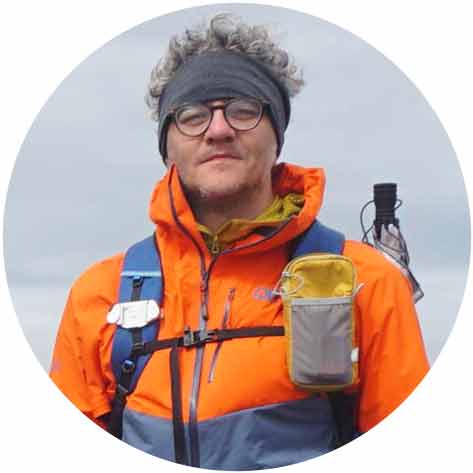 |
||
|
Andy Neil |
||
|
Andy has been a keen long-distance hiker and wild camping enthusiast since he completed the Cleveland Way in 2015. Since then, he has walked thousands of trail miles all over the UK and is an active member of the Wild Camping UK community, being an admin of the largest wild camping community on Facebook. He strongly advocates for responsible wild camping and believes it is important to leave no trace when camping in the wilderness. He joined the UOG team in 2021 and works as a website developer and content creator. |
||
Wild camping is more than just a hobby; it’s an enriching and deeply rewarding experience that allows you to reconnect with nature in its most unfiltered form. Whether waking up to a breathtaking mountain sunrise, listening to the soothing sounds of a forest at night, or simply enjoying the solitude that only the wilderness can offer wild camping provides a unique escape from the everyday hustle and bustle. The thrill of setting up camp in a remote, unspoiled location brings a profound sense of freedom and adventure, reminding us of our primal connection to the land.







